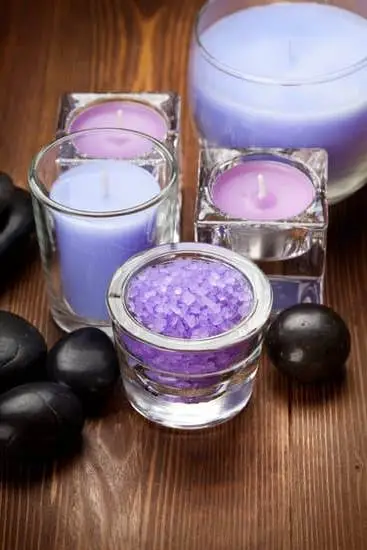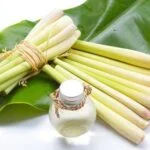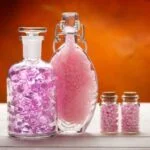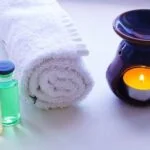Are you looking for a natural way to boost your mood and happiness? In this article, we will explore how to make a happy oil blend for aromatherapy. Aromatherapy has been used for centuries to improve emotional well-being, and creating a customized oil blend can be an effective way to harness its benefits.
Aromatherapy utilizes the healing properties of essential oils to promote physical and emotional health. When it comes to happiness, certain essential oils have been found to have mood-boosting effects. By understanding the science behind aromatherapy and the benefits of oil blends, you can create a personalized happy oil blend that suits your needs.
Choosing the right essential oils is crucial in creating a happy oil blend for aromatherapy. Different essential oils have distinct properties that can affect mood, such as calming, uplifting, or energizing. In the next section, we will delve into how to select the best essential oils for your personalized blend.
Choosing the Right Essential Oils for the Happy Oil Blend
When it comes to creating a happy oil blend for aromatherapy, choosing the right essential oils is crucial. Not all essential oils are created equal when it comes to promoting happiness and positive emotions.
Some of the best essential oils for creating a happy oil blend include citrus oils such as bergamot, lemon, and orange, as well as floral oils like rose and geranium. These oils are known for their uplifting and mood-boosting properties, making them ideal for a happy oil blend.
Another important consideration when choosing essential oils for a happy oil blend is personal preference. Each individual may have different reactions to certain aromas, so it’s important to select oils that not only promote happiness but also appeal to your senses. Experimenting with different combinations of essential oils can help you create a personalized happy oil blend that resonates with you on an emotional level.
In addition to promoting happiness, the chosen essential oils should also complement each other in terms of aroma and therapeutic effects. This will ensure that the final blend is harmonious and balanced, providing maximum effectiveness in achieving emotional wellbeing through aromatherapy.
| Essential Oils | Main Benefits |
|---|---|
| Bergamot | Uplifting, stress-reducing |
| Lemon | Energizing, mood-boosting |
| Orange | Cheerful, anxiety-reducing |
| Rose | Calming, comforting |
The Science Behind Aromatherapy and Happiness
Aromatherapy has been used for centuries as a natural way to promote relaxation, improve mood, and enhance overall well-being. When it comes to creating a happy oil blend for aromatherapy, it’s important to understand the science behind how essential oils can positively impact mood and emotions.
Research has shown that certain essential oils have the ability to affect the limbic system in the brain, which is responsible for emotions, behavior, motivation, and long-term memory. This means that when you inhale or use essential oils in aromatherapy, they can directly influence your mood and emotional state.
For example, citrus scents like lemon or sweet orange are known for their uplifting and energizing properties, while floral scents like lavender or rose are commonly used for their calming and relaxing effects.
To make a happy oil blend for aromatherapy, it’s essential to choose the right combination of essential oils that work harmoniously together to promote happiness and positivity. Some popular essential oils for creating a happy blend include bergamot, ylang-ylang, grapefruit, and geranium. Each of these oils has unique aromatic profiles that can help elevate mood and reduce stress when combined in the right proportions.
When blending essential oils for happiness, it’s crucial to consider their therapeutic properties as well as their aroma. For example, bergamot is known for its balancing and uplifting properties, while ylang-ylang is often used to promote relaxation and sensuality. By understanding the specific effects of each essential oil, you can create a happy oil blend that targets various aspects of emotional well-being.
| Essential Oil | Therapeutic Properties |
|---|---|
| Bergamot | Uplifting & Balancing |
| Ylang-Ylang | Relaxation & Sensuality |
| Grapefruit | Energizing & Uplifting |
| Geranium | Balancing & Harmonizing |
How to Mix and Blend the Oils for Maximum Effectiveness
Understanding Oil Blending
When it comes to creating a happy oil blend for aromatherapy, it’s essential to understand the art and science of oil blending. Blending essential oils is not just about combining different scents; it also involves understanding the therapeutic properties of each oil and how they can complement each other to promote a positive emotional state.
Before starting to mix your oils, take the time to research and familiarize yourself with the properties of each essential oil you plan to use.
Creating a Balanced Blend
To create a happy oil blend that is effective in promoting feelings of happiness and well-being, it’s crucial to focus on creating a balanced blend. This means choosing oils that complement each other and work together harmoniously. Some essential oils are known for their uplifting and energizing properties, while others are more calming and grounding. By combining these different types of oils, you can create a well-rounded blend that addresses various aspects of emotional wellness.
Blending Techniques
There are several techniques that you can use to blend your essential oils effectively. One common method is the “top, middle, base” technique, where you choose oils from each category to create a balanced aroma profile. Another approach is to start with a single base note oil and then add complementary middle and top notes to create complexity in the blend. Experimenting with different ratios and combinations will help you find the perfect happy oil blend for your aromatherapy needs.
By gaining an understanding of oil blending, focusing on creating a balanced blend, and experimenting with different blending techniques, you can effectively mix and blend essential oils for maximum effectiveness in promoting happiness through aromatherapy.
Tips for Creating a Personalized Happy Oil Blend
Creating a personalized happy oil blend for aromatherapy can be a fun and rewarding experience. By carefully selecting the right essential oils and blending them in the proper proportions, you can create a unique oil blend tailored to your specific needs and preferences. Here are some tips to help you get started on creating your own personalized happy oil blend:
- Understand the properties of different essential oils: Before creating your blend, it’s important to have a good understanding of the properties and benefits of different essential oils. Some oils are known for their uplifting and energizing effects, while others are more calming and soothing. By knowing the properties of each oil, you can choose the ones that best align with what you want to achieve with your happy oil blend.
- Start with a small batch: When experimenting with creating your own oil blend, it’s a good idea to start with a small batch. This way, you can test out different combinations without wasting too much product if it doesn’t turn out as expected. Once you find a blend that works well for you, you can then make larger quantities.
- Keep track of your recipes: As you experiment with different combinations of essential oils, be sure to keep track of your recipes. This will allow you to recreate blends that work well for you in the future, as well as make adjustments if needed.
By following these tips and being mindful of the properties of essential oils, you can create a personalized happy oil blend that is perfect for uplifting your mood and promoting happiness through aromatherapy.
Different Ways to Use the Happy Oil Blend for Aromatherapy
Diffusion
One of the most popular and effective methods for using a happy oil blend for aromatherapy is through diffusion. This can be done using a diffuser, which allows the essential oils to be dispersed into the air as a fine mist, filling the room with their uplifting aroma. Simply add a few drops of your happy oil blend to the water in your diffuser and enjoy the benefits of aromatherapy throughout your home or workspace.
Topical Application
Another way to use your happy oil blend is through topical application. When diluted with a carrier oil, such as sweet almond oil or coconut oil, the essential oils can be applied directly to the skin. This method allows for absorption of the oils into the bloodstream, providing both physical and emotional benefits. Consider applying the blend to pulse points, such as wrists and temples, for an easy and convenient way to experience its mood-boosting effects.
Bath Soak
Creating a luxurious bath soak with your happy oil blend is a wonderful way to relax and uplift your spirits at the same time. Simply add a few drops of the blend to a warm bath along with some Epsom salts or carrier oils. The combination of warm water, soothing scents, and beneficial properties of the essential oils will help you unwind and de-stress while promoting feelings of happiness and well-being.
By incorporating these different methods into your routine, you can experience the positive effects of your happy oil blend for aromatherapy throughout your day. Whether it’s through diffusion, topical application, or a rejuvenating bath soak, you can easily integrate this natural remedy into your lifestyle for improved mood and overall wellness.
Safety Precautions and Guidelines for Using Aromatherapy Oils
When using aromatherapy oils, it is important to take the necessary precautions to ensure safety and maximize the benefits of these natural remedies. Essential oils are potent and concentrated substances that can have both positive and negative effects if not used properly. Here are some safety precautions and guidelines for using aromatherapy oils:
1. Patch test: Before using any essential oil for the first time, it is essential to conduct a patch test to check for any allergic reactions or skin sensitivities. Mix a small amount of the oil with a carrier oil (such as coconut or almond oil) and apply it to a small area of skin. Wait 24 hours to see if there is any irritation before using the oil more extensively.
2. Dilution: Essential oils are highly concentrated, so they should always be diluted with a carrier oil before applying them to the skin. The typical dilution ratio is 2-3 drops of essential oil per teaspoon of carrier oil for adults, and even more dilution for children or those with sensitive skin.
3. Consultation with a healthcare professional: If you have any underlying health conditions or are pregnant, it is important to consult with a healthcare professional before using aromatherapy oils. Some essential oils may interact with certain medications or may not be safe for use during pregnancy.
4. Storage: Essential oils should be stored in dark glass bottles in a cool, dark place away from direct sunlight and heat. Proper storage helps maintain the efficacy of the oils and prevents them from degrading over time.
5. Inhalation safety: When using essential oils for inhalation, such as in a diffuser, it is important to follow manufacturer instructions and not exceed recommended usage times. Prolonged exposure to concentrated essential oils through inhalation can have adverse effects on respiratory health.
By following these safety precautions and guidelines, you can enjoy the benefits of aromatherapy oils while minimizing any potential risks associated with their use.
Conclusion
In conclusion, creating a happy oil blend for aromatherapy can have a profound positive impact on overall well-being and emotional health. By understanding the benefits of aromatherapy and the science behind the use of essential oils for happiness, individuals can take proactive steps towards incorporating this natural and holistic approach into their daily self-care routine. The right combination of essential oils can uplift mood, reduce stress and anxiety, and promote a sense of relaxation and calm.
It is important to carefully select the essential oils for the happy oil blend, considering their individual properties and how they complement each other. Whether it’s citrus oils like bergamot and sweet orange for an energizing effect, or floral oils like lavender and geranium for a calming influence, each oil plays a crucial role in creating a balanced aroma that promotes happiness.
By following safety precautions and guidelines when using aromatherapy oils, individuals can fully embrace the positive impact of the happy oil blend without any adverse effects. Whether it’s through diffusing the blend, adding it to bathwater, or using it as a personal fragrance, there are various ways to incorporate aromatherapy into daily life. Overall, making a happy oil blend for aromatherapy is a simple yet powerful tool in promoting emotional wellness and happiness.
Frequently Asked Questions
What Essential Oil Blends Happiness?
The essential oil blend that promotes happiness is typically a combination of citrus oils like orange, lemon, and bergamot. These oils are known for their uplifting and mood-boosting properties.
How Do You Make Uplifting Essential Oil Blend?
To make an uplifting essential oil blend, you can combine essential oils such as bergamot, grapefruit, and lavender. These oils work together to create a refreshing and energizing aroma that can uplift your mood.
What Is the Best Essential Oil Blend for Mood?
The best essential oil blend for improving mood often includes oils such as lavender, chamomile, and ylang ylang. These oils are known for their calming and relaxing effects, which can help improve overall mood and reduce stress or anxiety.

Are you looking for a natural way to improve your health and wellbeing?
If so, aromatherapy may be the answer for you.





